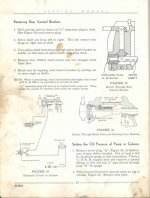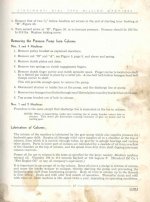I'll try again, though it does not seem to do any good.

Here are some likely facts, sorry if they are not wanted
1. There won't be any photos with arrows
2. There won't be any magic savior who documented all this with photos in 1957 or so, and you will have to read and understand the pub that is available
if you actually want to work on it.
3. I'll differ with cmike and say its a Model ER High Speed Dial type - which is what all 4A serial machines were, and is what the serial book states
4. The assumptions that the vertical is nothing like like the horizontal is just plain silly in the area of interest. That area is where the power comes in
Post #2 has some scans from M-786-2, but I have no idea at all if any digesting of that info took place.
The related pub is M-786-2 which is a Service and Parts book. There are later versions of M-786, but I have no idea where one would go to find such a thing. M-786-2 states that it covers both Medium and High Speed Dial types
As one would expect, the pressure pump is in the column adjacent the drive pulley bracket - I expect the pump runs as soon as the main drive motor runs
Access to the pump requires removal of the drive pulley bracket - see page 27 in Post #2
As stated in Post #2, higher resolution versions can be emailed if wanted
Before I EVER took things apart, I would follow the instructions on page 26 in Post #2 and see if I could get the pressure up to spec












